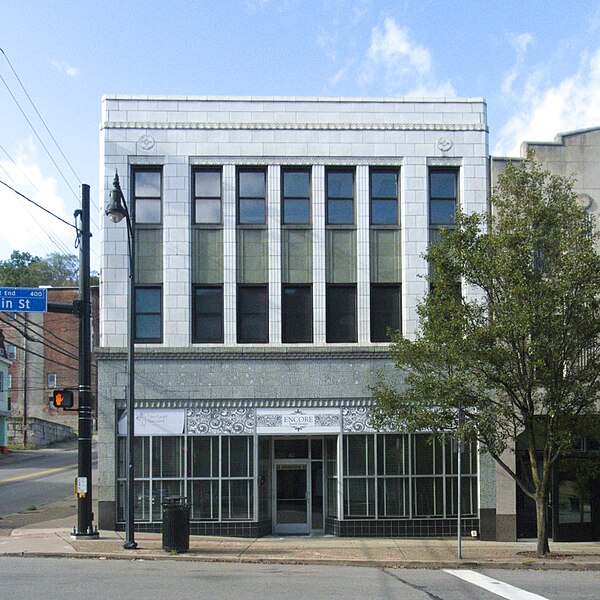
This Art Deco building probably dates from the 1930s. The sharply rectangular forms are softened and enriched by textures in terra cotta, making a composition that should please both classicists and modernists.


Father Pitt has pictured this building before, but here are two more pictures. This would be an undistinguished modernist box except for the patterns in the bricks, which elevate the whole building to Art Deco and make it an ornament to its corner rather than an unfortunate relic of the middle twentieth century.

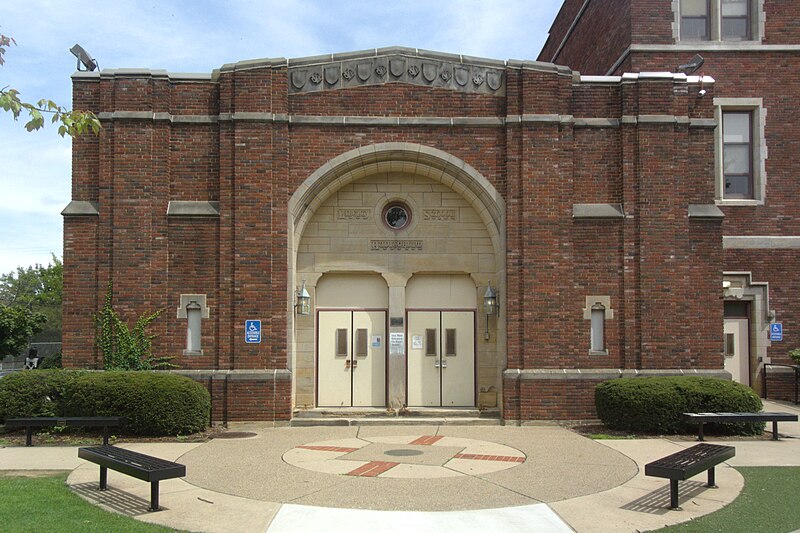
This splendid little auditorium combines the Jacobean style of the main school with a hint of Art Deco. Father Pitt does not yet know who designed the addition. The original school was a design by MacClure & Spahr, and we know that Benno Janssen designed additions to more than one MacClure & Spahr building; this would certainly be in the range of Janssen’s style.

This is about as perfect as an Art Deco storefront can get. What is especially cheering is that the ground floor is a new construction, using modern stock materials to create a storefront that matches the spirit of the rest of the building. Until a little more than twelve years ago, the ground floor had been bricked up in an unsympathetic fashion, as you can see in a 2008 image from Google Maps.
Father Pitt does not know what the initial K stands for at the top of the façade, and would be delighted to be informed.


Designed by A. F. Link, this Romanesque church was begun in 1923 and opened in 1925. The style is transitional: it uses traditional Romanesque elements, but it is already veering toward the Art Deco modernist interpretation of those elements that would become common in the 1930s through the 1950s.

The cross at the top of the (liturgical) west front sets the modernist tone for the decorations.



These abstract capitals continue the streamlined modernist theme, as do the three lunettes (Mary, Jesus, Joseph) on the west front:
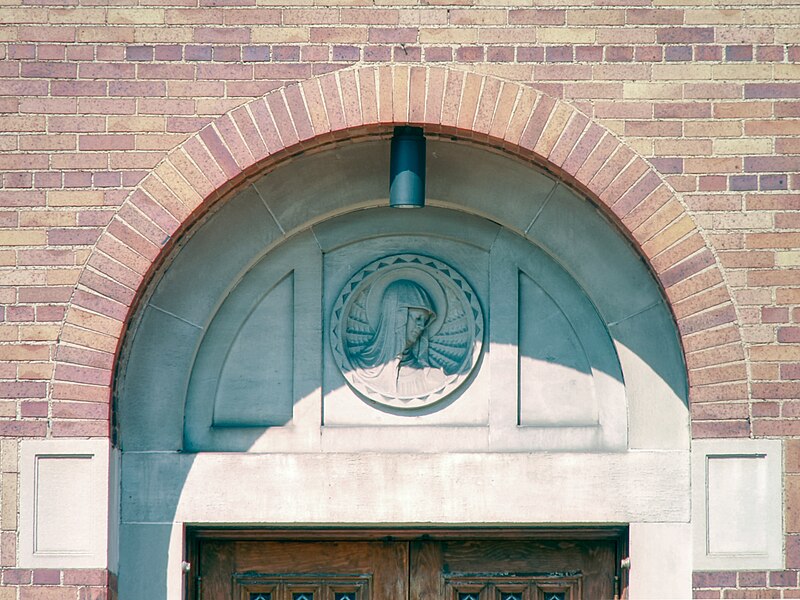

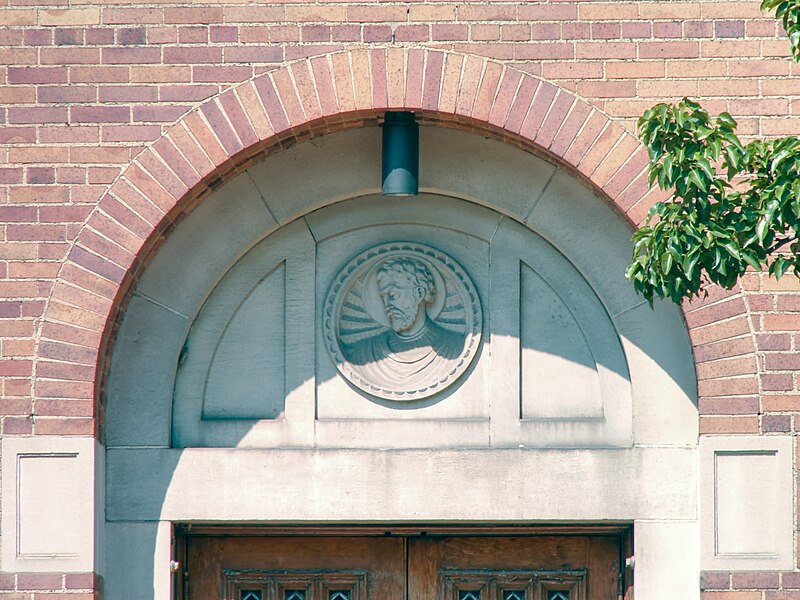

Though it is a complex design, the rose window echoes the streamlining of the capitals and other details.

In contrast to the Deco streamlining of the front, the side of the church, with its crenellations and complex brickwork, could almost pass for a middle-1800s church by Charles F. Bartberger. Yet the styles fit together; there is no dissonance between the different views of the church.
For those who are interested, here is a Pittsburgh Catholic article published March 27, 1924, that identifies many of the contractors and artists who worked on the church.
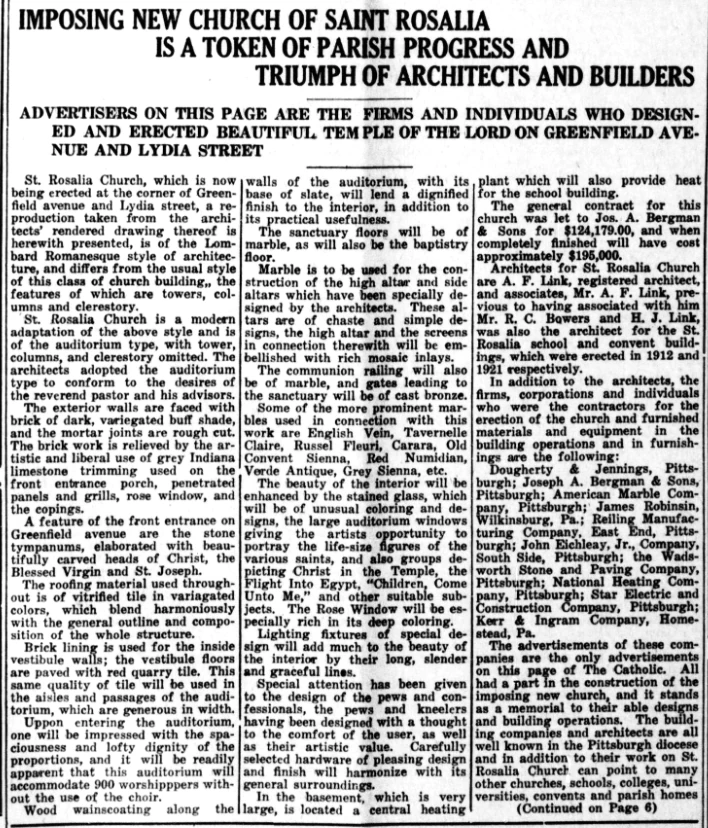
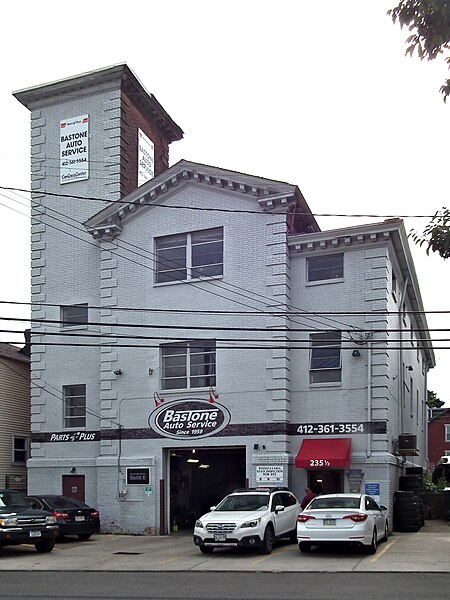
Above is the old Carron Street Baptist Church, which as you might guess is on Carron Street. It has not been a church for quite a while, and it has gone through some substantial alterations on its way to becoming a garage, so old Pa Pitt is not quite sure whether it ought to be added to the collection of churches with the sanctuary upstairs, or whether it simply had a high basement. (Update: The answer is that it had a high basement. The church was designed by the Beezer Brothers, and we have found the architects’ original rendering.)
From the church that became a garage we walk just about a block to the garage that became a high-class furniture store.
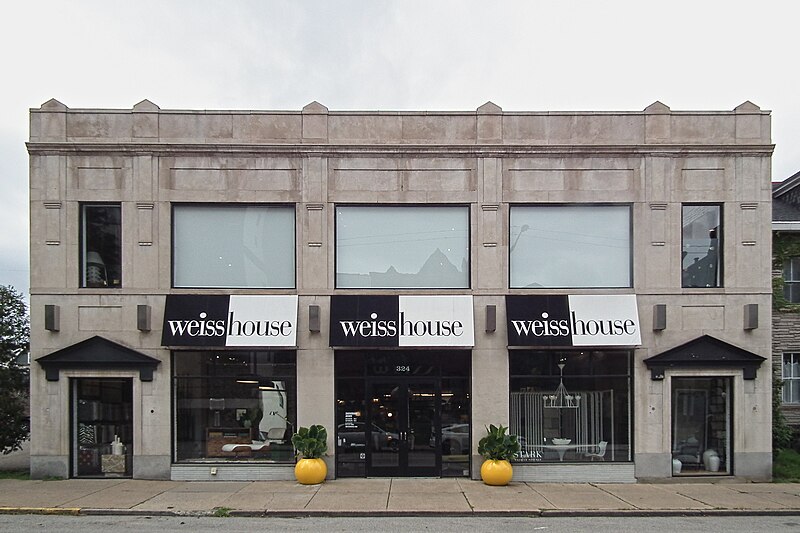
This was the South Highland Garage, and as a work of architecture it is probably more distinguished than the Carron Street Baptist Church ever was. If you like, you may formulate your own sarcasm about the true American religion and our fitting sense of architectural priorities. But then you can remember that Calvary Episcopal Church and Sacred Heart are just a short stroll away, and your sarcasm will wither on your tongue.
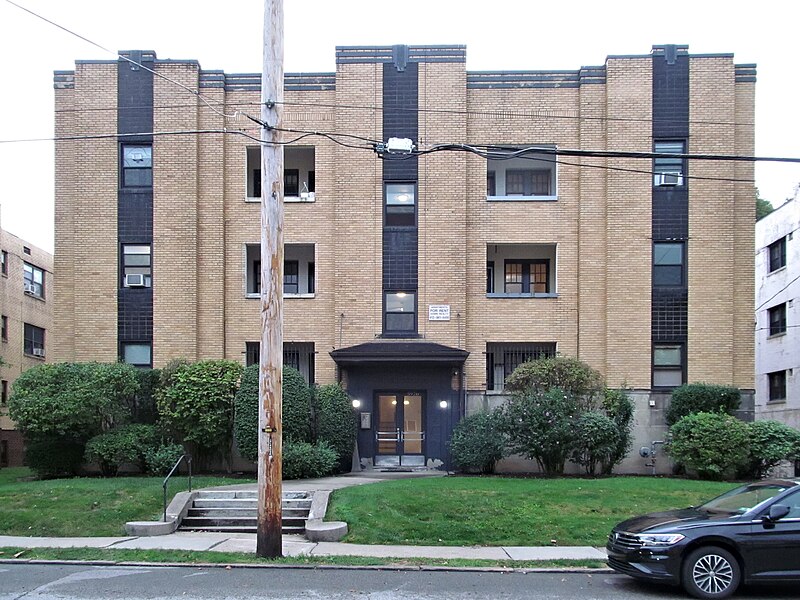
Ornament is minimal but effective on this moderne apartment building on Walnut Street. The front has a classical symmetry emphasized by strong black verticals, with cornice bands tied together in little deco knots. The inset balconies at first hardly register as balconies, but give the apartments behind them a private outdoor space.

Marion Steen was staff architect for the Pittsburgh Board of Public Education for two decades, from 1935 to 1954, and in that time he gave us some striking Art Deco schools. One of the most striking things about them was how different each of them was. Someday soon old Pa Pitt will take a tour of Mount Lebanon to photograph Ingham & Boyd’s schools there, and when he does, you will see that they all have a certain Ingham & Boyd sameness to them—which is not a bad thing: they are good variations on a good theme. But Marion Steen was like a jazz musician who could never play the same solo twice.
The most striking thing about the 1942 Weil School, which is still in use as a charter school, is the four-storey vertical that marks off the main entrance.
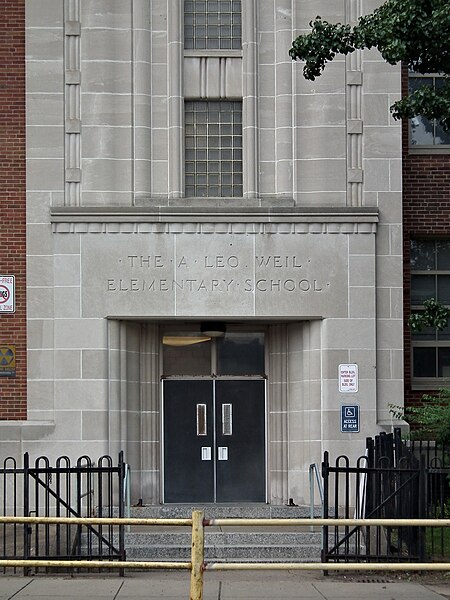

Old Pa Pitt does not know who is responsible for the strongly Deco allegorical figure pouring out floral treasures for the delighted children below. But he is certain that education is supposed to look something like this.
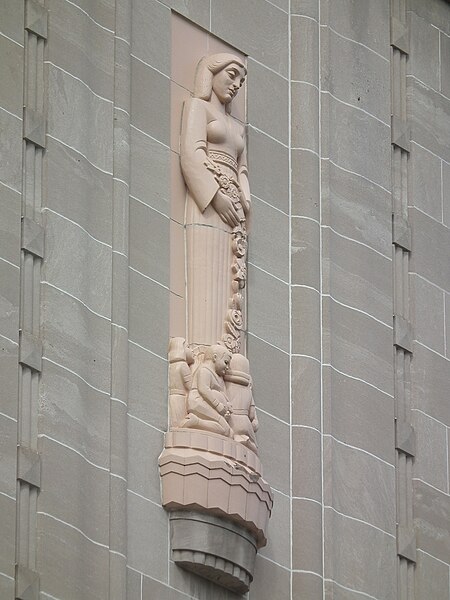
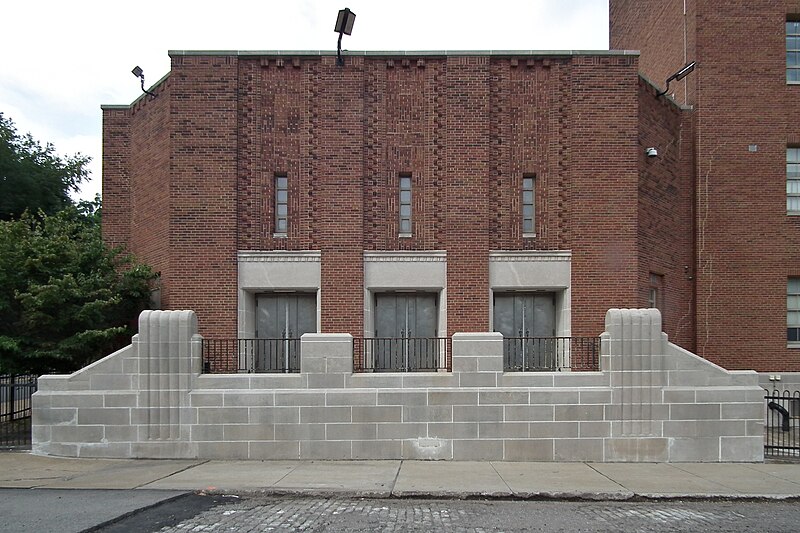
The auditorium is an exercise in Deco classicism. Note the textures in the brickwork.


We hope someone will put some effort into preserving the wavy Art Deco metalwork in the railings at the Centre Avenue end of the building.
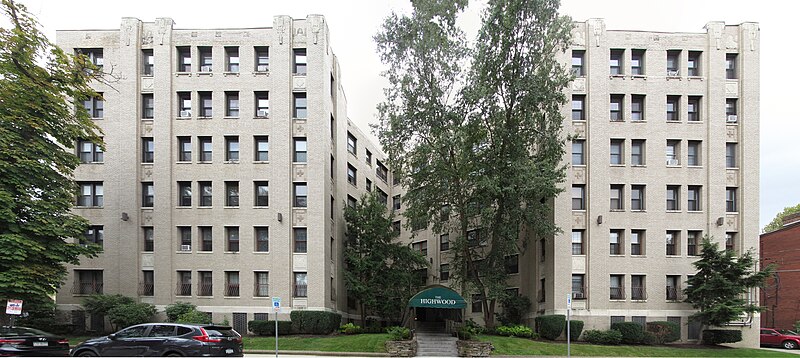
Opened in 1930, this Art Deco palace had an irregular pentagon of a lot to fill. The architect, R. Garey Dickson, solved the problem by making a nearly (but not quite) symmetrical face (shown above) along Elwood Street, the longest side of the pentagon, and then filling the rest with an L-shaped building at an odd angle to the front.
R. Garey Dickson is another of those second-string architects who thrived in comfortable obscurity. He was part of a family of architects, all of whom called themselves Garey Dickson and did not always even distinguish themselves by their initials (C. Garey Dickson had a son named C. Garey Dickson who worked in his firm). Much of their work was in Washington (Pennsylvania), where R. Garey designed the splendid Jacobean palace for the YWCA at 42 West Maiden Street. He also pops up as the architect of a small chateau from 1929 in Forest Hills.

The Art Deco ornaments are worth pausing to admire.


In 1956, twenty years after Charles Z. Klauder’s Cathedral of Learning opened, Clapp Hall opened its doors. It was designed by Trautwein & Howard, the successors to Mr. Klauder, but it was no longer possible to make an academic building in the ornate Gothic style that had been Klauder’s specialty. Instead, the architects gave us a restrained late-Art-Deco modernist Gothic that fits well with Klauder’s buildings but doesn’t embarrass postwar sensibilities too badly. The entrance is at an angle to the rest of the building so that the Cathedral of Learning is perfectly framed in the doorway as you walk out.

Below, three views of the Fifth Avenue side:

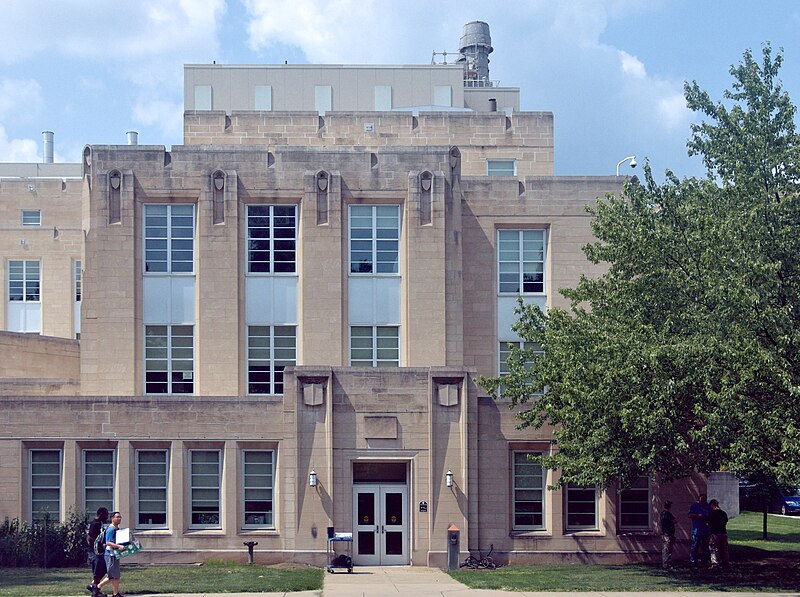

The Tennyson Avenue side has a similar face:

